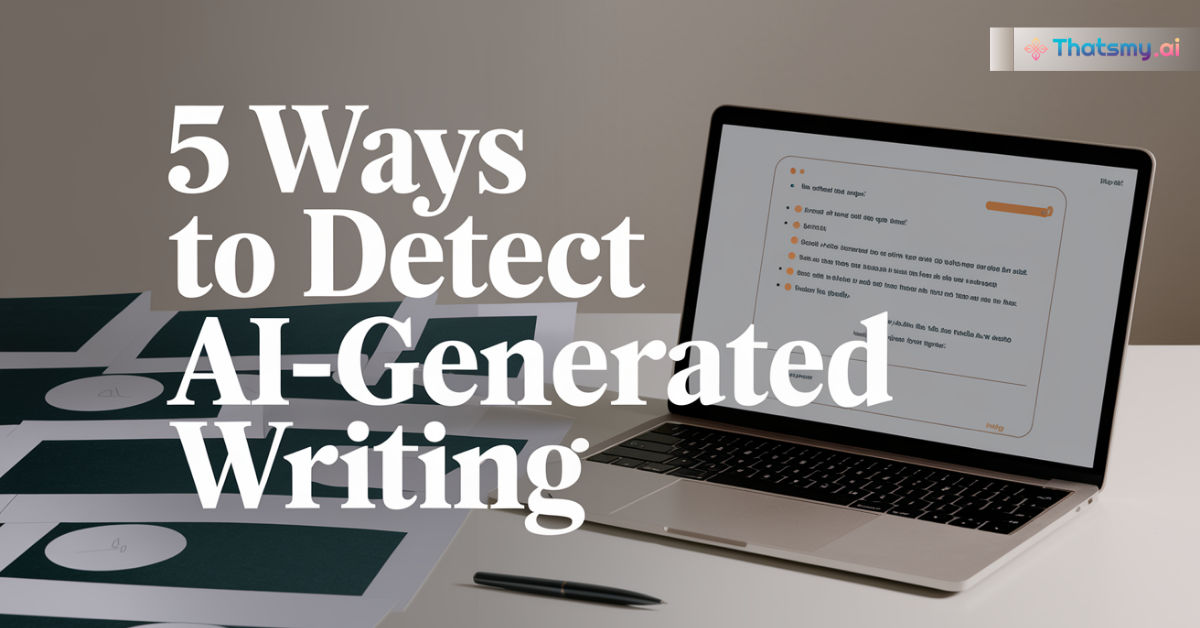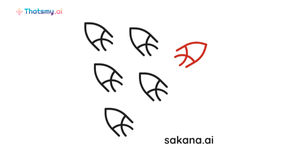The rise of AI-generated content has made it more challenging to distinguish between human and AI writing. This article provides five simple methods to identify AI-generated text, including observing language patterns, detecting inconsistencies, using AI detection tools, recognizing a lack of depth, and spotting unusual language errors. With AI content growing rapidly, it's essential to stay informed about how to differentiate between human and machine-generated writing. The guide helps readers maintain digital integrity by identifying AI-produced content effectively.

The rapid rise of AI-generated content is making it more challenging to distinguish between human-written and machine-produced text. With AI becoming more sophisticated, the line between human and AI writing is increasingly blurred.
According to recent studies, AI-generated content surged by an astounding 8,362% between November 2022 and March 2024. So, how can you spot the difference between human and AI writing? Here are five easy ways to identify AI-generated content.
One of the biggest giveaways of AI-generated writing is its distinct language patterns.
Here’s what to look out for:
AI-generated text often lacks the natural, emotional touch that human writing has. It tends to use overly formal or complex words, making it sound stiff or robotic. Unlike human writing, which can be expressive and varied, AI tends to deliver sentences in a monotone way.
AI tends to produce sentences that are very similar in length and structure. This creates a
monotonous feel, making the text less engaging to read. On the other hand, human writing
usually has varied sentence lengths, creating a more dynamic and interesting flow.
If you notice that the content feels lifeless or too “perfect” it might be generated by AI.
AI-generated content often struggles with maintaining consistency, especially in more complex narratives or when providing detailed information. For instance:
AI might suddenly change a character's description or a scene's setting without any logical transition.
If you notice that the content contradicts itself, such as a character's hair color changing midway through a story, it’s likely the work of AI. This inconsistency happens because AI often lacks the contextual understanding that humans naturally possess.
When reading content, pay close attention to these inconsistencies, as they are clear indicators of AI involvement.
There are several AI detection tools available that can help you identify if a piece of content was generated by AI. Two of the most reliable ones are:
Known for its high accuracy, Copyleaks can detect AI content in over 30 languages. It’s widely used and has been proven effective in identifying AI-generated text.
This tool excels at analyzing text patterns, identifying overused phrases, and spotting repetitive word combinations common in AI writing. It offers both free and paid versions with varying features.
Using these tools is a great way to confirm whether a piece of content was created by an AI or a human. It's recommended to use more than one tool for better accuracy.
AI-generated content often lacks depth, detailed explanations, or strong contextual understanding. For example:
AI tends to provide vague information or shallow explanations. When complex topics are discussed, AI might shy away from going in-depth or fail to provide real-world examples.
AI-generated content might sound confident, but it often lacks the supporting details that would make it truly informative. This happens because AI doesn't have personal experiences or expert knowledge to draw from.
If the writing feels superficial or lacks substance, it might be generated by AI.
Although AI-generated content is generally well-structured, it occasionally makes bizarre mistakes. These include:
AI might produce phrases that seem odd or out of place, such as calling trees “Arbor Day notables.”
Sometimes, AI makes mistakes that a human writer would rarely make, like claiming there are only two "r" letters in the word "strawberry."
These quirky errors can serve as clear indicators that the text was created by AI.
As AI technology continues to evolve, it’s becoming increasingly important to be able to differentiate between human and AI-generated content.
By paying attention to language patterns, consistency, depth, unusual errors, and using detection tools like Copyleaks and GPTZero, you can confidently identify AI-produced text.
Staying informed about these methods helps maintain digital integrity and ensures that we continue to value authentic human creativity in writing.
Sign up to gain AI-driven insights and tools that set you apart from the crowd. Become the leader you’re meant to be.
Start My AI Journey
ThatsMyAI
23 February 2025

ThatsMyAI
4 November 2024

ThatsMyAI
18 October 2024

ThatsMyAI
26 August 2024